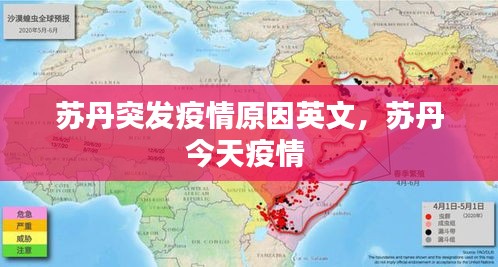Introduction to the Outbreak
The recent outbreak of the virus in Sudan has caught the attention of the global health community. Understanding the reasons behind such an outbreak is crucial in preventing similar incidents in the future. This article aims to delve into the possible causes of the sudden surge in cases in Sudan.
Environmental Factors
One of the primary factors contributing to the outbreak in Sudan is the environmental conditions. Sudan, located in northeastern Africa, is characterized by a hot and arid climate, which creates an ideal environment for the proliferation of certain viruses. The lack of adequate sanitation and clean water sources can facilitate the spread of diseases. Additionally, the country's vast wildlife population, including animals that are natural hosts to viruses, may have played a role in the transmission of the virus to humans.
Human-Wildlife Interactions
Sudan's extensive wildlife, including various species of bats, has been identified as potential carriers of viruses that can jump to humans. The increasing human encroachment into wildlife habitats and the bushmeat trade have heightened the risk of zoonotic diseases. The proximity of humans to these animals, coupled with the lack of awareness and preventive measures, has made the transmission of viruses more likely.
Poor Public Health Infrastructure
Sudan's public health infrastructure has been underfunded and strained for years, making it difficult to respond effectively to health emergencies. The lack of adequate healthcare facilities, medical supplies, and trained healthcare workers has hindered the early detection and control of the outbreak. This has allowed the virus to spread rapidly within the population.
Lack of Public Awareness and Education
The lack of public awareness and education about the importance of hygiene and preventive measures has also contributed to the outbreak. Many individuals may not be aware of the symptoms of the virus or the steps they should take to protect themselves and others. This lack of knowledge can lead to delayed diagnosis and treatment, which in turn facilitates the spread of the virus.
Economic and Social Factors
Economic and social factors have also played a significant role in the outbreak. Sudan's economy has been struggling with inflation, unemployment, and poverty, which can lead to overcrowding in urban areas and inadequate living conditions. These factors can create an environment where diseases can easily spread. Moreover, the displacement of people due to conflict and climate change has increased the vulnerability of populations to diseases.
International Travel and Trade
International travel and trade can also contribute to the rapid spread of diseases. Sudan's proximity to other countries and its role as a transit point for goods and people can facilitate the introduction of new viruses into the country. The movement of infected individuals or animals across borders can lead to outbreaks that are difficult to contain.
Conclusion
The sudden outbreak of the virus in Sudan is a complex issue with multiple contributing factors. Environmental conditions, human-wildlife interactions, poor public health infrastructure, lack of public awareness, economic and social factors, and international travel and trade all play a role in the spread of the virus. Addressing these issues requires a multi-faceted approach that includes strengthening public health systems, improving environmental conservation efforts, enhancing public education, and promoting international cooperation to prevent future outbreaks. By understanding the root causes of the outbreak, Sudan and the global community can work together to mitigate the risks and protect public health.
转载请注明来自大石桥市北方行道树种植有限公司【官网】,本文标题:《苏丹突发疫情原因英文,苏丹今天疫情 》















 蜀ICP备2022005971号-1
蜀ICP备2022005971号-1
还没有评论,来说两句吧...